History GK From IAS Exam 1997:
1. After consolidating his power, Balban assumed the grand title of
(A) Tute-Hind
(B) Kaisr-i-Hind
(C) Zil-i-Ilahi
(D) Din-i-Ilahi
Ans: Zil-i-Ilahi (C)
2. Head of the military department under the recognized central machinery of administration during Akbar’s reign was
(A) Diwan
(B) Mir Bakshi
(C) Mir Saman
(D) Bakshi
Ans: Mir Bakshi (B)
3. The medieval Indian writer who refers to the discovery of America is
(A) Malik Muhammad Jayasi
(B) Amir Khusrau
(C) Raskhan
(D) Abul Fazl
Ans: Abul Fazl (D)
4. Which one of the following pairs of composers in different languages and their works on the Mahabharata theme is correctly matched?
(A) Sarladasa- Bengali
(B) Kasirama- Oriya
(C) Tikkana- Mararthi
(D) Pampa- Kannada
Ans: Pampa- Kannada (D)
5. Who among the following was associated with the suppression of thugs?
(A) General Henry Prendergast
(B) Captain Sleeman
(C) Alexander Burres
(D) Captain Robert Pemberton
Ans: Captain Sleeman (B)
6. What is the correct chronological sequence of the following?
(1) Wood’s Education Despatch
(2) Macaulay’s minute on education
(3) The Sargent Education Report
(4) Indian Education (Hunter Commission)
Select the correct answer using the code given below:
(A) 2, 1, 4, 3
(B) 2, 1, 3, 4
(C) 1, 2, 4, 3
(D) 4, 3, 1, 2
Ans: 2, 1, 4, 3 (A)
7. Match List-I with List-II and select the correct answer using the codes given below the lists
| List-I | List-II |
|---|---|
| (A) Moplah Revolt | (1) Kerala |
| (B) Pabna Revolt | (2) Bihar |
| (C) Eka Movement | (3) Bengal |
| (D) Birsa Munda Revolt | (4) Awadh |
Codes:
(A) A-1; B-3; C-4; D-2
(B) A-2; B-3; C-4; D-1
(C) A-1; B-2; C-3; D-4
(D) A-3; B-4; C-1; D-2
Ans: A-1; B-3; C-4; D-2 (A)
8. Who among the following was associated with the suppression of thugs?
(A) General Henry Prendergast
(B) Captain Sleeman
(C) Alexander Burres
(D) Captain Robert Pemberton
Ans: Captain Sleeman (B)
9. Match List-I with List-II and select the correct answer using the codes given below the lists
| List-I | List-II |
|---|---|
| (A) Butler Committee Report | (1) Jallianwala Bagh Massacre |
| (B) Hartog Committee Report | (2) Relationship between the Indian State and the Paramount Power |
| (C) Hunter Inquiry Committee Report | (3) Working of Dyarchy as laid down in the Montague-Chelmsford Reforms |
| (D) Muddiman Committee Report | (4) The growth of education in British India and potentialities of its further progress |
Codes:
(A) A-3; B-2; C-1; D-4
(B) A-1; B-4; C-2; D-3
(C) A-2; B-1; C-3; D-4
(D) A-2; B-4; C-1; D-3
Ans: A-2; B-4; C-1; D-3 (D)
10. Match List-I with List-II and select the correct answer using the codes given below the lists
| List-I | List-II |
|---|---|
| (A) Morley Minto Reforms | (1) Country-wise agitation |
| (B) Simon Commission | (2) Withdrawl of a movement |
| (C) Chauri-Chaura Incident | (3) Communal Electorates |
| (D) Dandi March | (4) Communal Outbreaks |
| (5) Illegal manufactures of salt |
Codes:
(A) A-3; B-4; C-5; D-2
(B) A-4; B-1; C-2; D-3
(C) A-2; B-3; C-4; D-5
(D) A-3; B-1; C-2; D-5
Ans: A-3; B-1; C-2; D-5 (D)
11. The Poona Pact which was signed between the British Government and Mahatma Gandhi in 1934 provided for
(A) creation of dominion status for India
(B) separate electorates for the Muslims
(C) separate electorates for the Harijans
(D) joint electorates with the reservation for Harijans
Ans: joint electorates with the reservation for Harijans (D)
12. M.C.Setalvad, B.N.Rao and Alladi Krishnaswamy Iyer were distinguished members of the
(A) Swaraj Party
(B) All India National Liberal Federation
(C) Madras Labour Union
(D) Servants of India Society
Ans: Servants of India Society (D)
13. Match List-I with List-II and select the correct answer using the codes given below the lists
| List-I | List-II |
|---|---|
| (A) Surat Split | (1) 1929 |
| (B) Communal Award | (2) 1928 |
| (C) All Party Convention | (3) 1932 |
| (D) Poorna Swaraj Resolution | (4) 1907 |
| (5) 1905 |
Codes:
(A) A-4; B-3; C-1; D-5
(B) A-4; B-3; C-2; D-1
(C) A-2; B-5; C-4; D-1
(D) A-1; B-4; C-2; D-3
Ans: A-4; B-3; C-2; D-1 (B)
14. Match List-I with List-II and select the correct answer using the codes given below the lists
| List-I | List-II |
|---|---|
| (A) Chittagaon Armoury Raid | (1) Lala Hardayal |
| (B) Kakori Conspiracy | (2) Jatin Das |
| (C) Lahore Conspiracy | (3) Surya Sen |
| (D) Ghadar Party | (4) Ram Prasad Bismil |
| (5) Vasudeo Phadke |
Codes:
(A) A-3; B-4; C-1; D-5
(B) A-4; B-3; C-2; D-5
(C) A-3; B-4; C-2; D-1
(D) A-2; B-4; C-3; D-1
Ans: A-3; B-4; C-2; D-1 (C)
15. “A graduate at 18, professor and associate editor of the Sudharak at 20, Secretary of the Sarvajanik Sabha and of the Provincial Conference at 25, Secretary of the National Congress at 29, leading witness before an important Royal Commission at 31, Provincial legislator at 34, Imperial legislator at 36, President of the Indian National Congress at 39, a patriot whom Mahatma Gandhi himself regarded as his master.”
This is how a biographer describes:
(A) Pandit Madan Mohan Malaviya
(B) Mahadev Govind Ranade
(C) Gopal Krishna Gokhale
(D) Bal Gangadhar Tilak
Ans: Gopal Krishna Gokhale (C)
16. The famous dialogue between Nachiketa and Yama is mentioned in the
(A) Chhandogyopanishad
(B) Mundakopanishad
(C) Kathopanishad
(D) Kenopanishad
Ans: Kathopanishad (C)
17. Which one of the following scripts of ancient India was written from right to left?
(A) Brahmi
(B) Nandnagari
(C) Sharada
(D) Kharosthi
Ans: Kharosthi (D)
18. Which one of the following statements regarding Ashoka stone pillars is incorrect?
(A) These are highly polished
(B) These are monolithic
(C) The shaft of pillars is tapering in shape
(D) These are parts of architectural structures
Ans: These are parts of architectural structures (D)
19. Match List-I with List-II and select the correct answer using the codes given below the lists
| List-I | List-II |
|---|---|
| (A) Gupta | (1) Badami |
| (B) Chandella | (2) Panamalai |
| (C) Chalukya | (3) Khajuraho |
| (D) Pallava | (4) Deogarh |
Codes:
(A) A-4; B-3; C-1; D-2
(B) A-4; B-2; C-3; D-1
(C) A-2; B-3; C-4; D-1
(D) A-3; B-4; C-1; D-2
Ans: A-4; B-3; C-1; D-2 (A)
20. Milindapanho is in the form of a dialogue between the king Menander and the Buddhist monk
(A) Nagasena
(B) Nagarjuna
(C) Nagabhatta
(D) Kumarilabhatta
Ans: Nagasena (A)
21. Which one of the following edicts mentions the personal name of Ashoka?
(A) Kalsi
(B) Rummindei
(C) Special Kalinga Edict
(D) Maski
Ans: Maski (D)
22. In Mahayana Buddhism, the Bodhisattva Avalokitesvara was also known as
(A) Vajrapani
(B) Manjusri
(C) Padmapani
(D) Maitreya
Ans: Padmapani (C)
23. The silver coins issued by the Guptas were called
(A) Rupaka
(B) Karshpana
(C) Dinara
(D) Pana
Ans: Rupaka (A)
24. Match List-I with List-II and select the correct answer using the codes given below the lists
| List-I (Author) | List-II (Text) |
|---|---|
| (A) Varamihira | (1) Prabandha Chintamani |
| (B) Vishakhadatta | (2) Mrichchha-Katikam |
| (C) Sudraka | (3) Brihat-Samhita |
| (D) Bilhana | (4) Devi-Chandraguptam |
| (5) Vikramankadeva-Charita |
Codes:
(A) A-3; B-4; C-5; D-2
(B) A-3; B-4; C-2; D-5
(C) A-5; B-3; C-4; D-1
(D) A-1; B-3; C-5; D-2
Ans: A-3; B-4; C-2; D-5 (B)
25. Which one of the following was a corporation of merchants in ancient India?
(A) Chaturvedimangalam
(B) Parishad
(C) Ashtadikgaja
(D) Manigrama
Ans: Manigrama (D)
26. The Badami rock inscription of Pulakesin I is dated in the Saka year 465. If the same were to be dated in Vikram Samvat, the year would be
(A) 601
(B) 300
(C) 330
(D) 407
Ans: 601 (A)
- The Slave Dynasty (1206 – 1290)
- The Khilji Dynasty (1290-1320)
- Tughlaq Dynasty (1320-1414)
- Sayyids & Lodhis
- Disintegration of Delhi Sultanate
- Sufism In India
- The Bhakti Movement
- Vijayanagar Empire (1336-1649)
- Sher Shah Suri- The Afghan Revival
- The Mughal Empire (1556-1707)
- Download Indian National Movement NIOS Book For IAS Exam
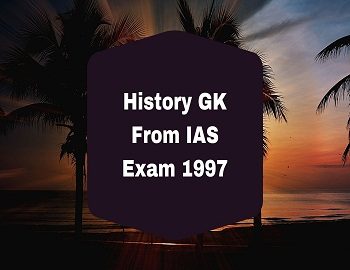
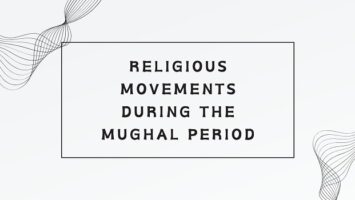
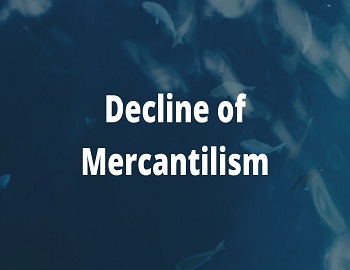
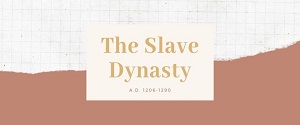
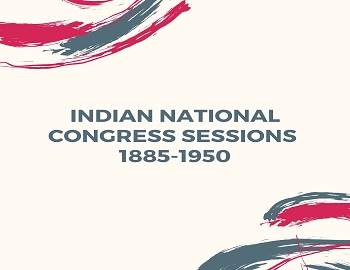
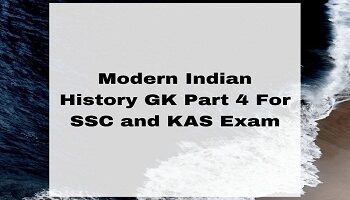
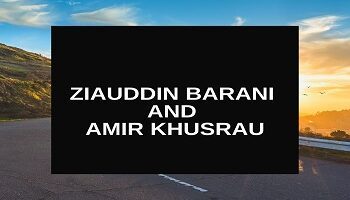
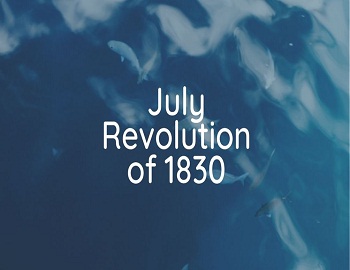
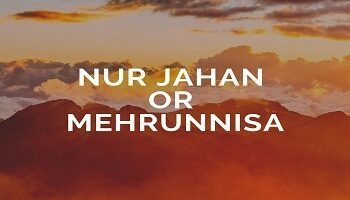
Comments (No)